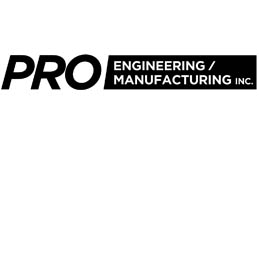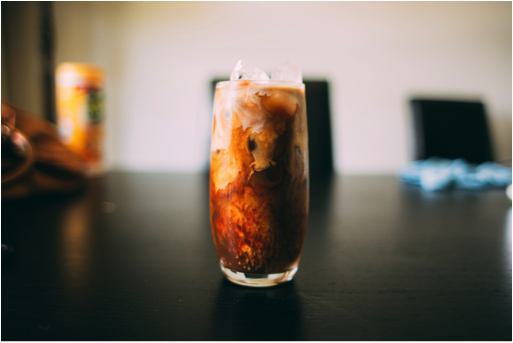Tunnel Pasteurization for Bottled Cold Coffee
Cold brew coffee is a popular product that has recently grown the coffee industry; in the United States, refrigerated cold coffee retail sales increased 460% from 2016 to 2018 (1). Cold coffee is chemically different from hot brewed coffee; particularly, it’s sweeter and less bitter; besides, online health and lifestyle websites have widely made health claims for cold coffee (1). “Cold brew” is an extraction of ground-roast coffee using a lower temperature (about 8°C / 46°F) and longer time than traditional hot brewed coffee or espresso (2).
This process gives coffee a very different extraction profile since different compounds are extracted at different rates (3). Numerous producers sell cold coffee as ready-to-drink (RTD) canned or bottled format (4); although, this represents the potential problem of microbial contamination and sensorial deterioration (4). Due to the lack of sterilizing temperatures obtained during hot brew coffee preparation, cold coffee has several challenges, including the need for optimization within the processing, roast degree, grinding, water composition, brew system, time, temperature, hygiene, and food safety requirements (4).
A critical part of the cold coffee process is that the coffee beans must be thoroughly washed at the beginning of the process. The reason for washing the beans is to remove microbes that form spores when subjected to the heat of thermal pasteurization.
Cold coffee that is not pasteurized must remain refrigerated through all the chain of distribution, storage, and dispensing (5). The downside is that the refrigerated shelf life of bottled coffee (cold or hot brewed) is limited by its microbial stability and sensorial deterioration (4). Researchers have even recommended drinking cold coffee as fresh as possible and to minimize it’s refrigerated shelf life (6).
Interestingly, some retailers, distributors, and consumers are not aware that cold brew coffee that is not pasteurized requires refrigeration. As the National Coffee Association pointed out, this reveals a need for educational interventions: Hot brewed coffee has a long tradition of being a low-risk beverage for food safety. In contrast, anyone who produces cold brew coffee has an obligation to follow the appropriate steps to secure food safety (5). The US Food Safety Modernization Act (FSMA) requires anyone manufacturing, processing, or packaging cold brew to comply with regulation practices (such as a food safety plan). For this reason, bottled cold coffee pasteurization has risen substantially.
Cold brew coffee has a pH value higher than 4.6, which is in the low acidity range and does not effectively suppress microbial development (6). Consequently, pathogens or spoilage organisms may develop in cold brew. The proliferation of unwanted bacteria leads to flavor changes and creates alcohol and carbon dioxide (7); the carbon dioxide can build up until the can or bottle seal is compromised, leading to potential harm or lawsuits. Even when the beverage does not expand, it remains fermented. Producers have looked into other ways to approach this problem. Cold coffee pasteurization is valuable because it eliminates the need for refrigeration while increasing the shelf-life (8). There are several types of thermal pasteurizers available for beverage-makers, including flash, batch, and tunnel pasteurizers. Tunnel pasteurizers receive the cold coffee already packaged in the bottles or cans (9). Using a traveling belt, the cold coffee bottles are taken through a variety of temperature changes in order to inhibit the enzymes and pathogenic microorganisms, going from hot zones to cooling zones. (10). In general, tunnel pasteurizers are divided into preheating, heating, and cooling zones, the heating occurs progressively until reaching the temperature of 60°C (140°F) is reached.
This temperature is maintained for a specific time depending on the product type (11). The over-pasteurization of cold coffee occurs when the movement of the product through the tunnel is delayed in the heating zones, this prevents cooling the product properly (12).
To help determine the amount of pasteurization applied to the product, the Pasteurization Unit (PU) was devised. The PU helps the beverage maker understand the level of pasteurization that the product has sustained.(13). It is defined as 1PU when the product has been exposed one minute to a 60°C (140°F) temperature. After being exposed to the specific level of PUs required, bottled cold coffee travels to the next zone, where it is cooled with cold water (sprayed water) to approximately 20°C (68°F). Water spray systems, including spray patterns, water volumes, and distribution systems depend on the pasteurizer manufacturer.
Cold coffee tunnel pasteurizers must control and monitor PU accumulation for three reasons: shelf life, sensorial characteristics, and energy efficiency. However, contrary to the well-established guidelines for beer and cider, it remains controversial how many PUs are needed in the case of cold coffee. Furthermore, many cold coffee producers also add dairy products to create all kinds of coffee varieties (cappuccino, mocha, latte, etc.), meaning there is another factor to consider when pasteurizing these products (14). Milk used in these coffee beverages can be pasteurized with low-temperature, high-temperature or ultra-high temperature pasteurization. When milk is pasteurized through conventional thermal pasteurization and is blended with a coffee extract, it can alter the sweetness, acidity, aroma, and taste of the coffee beverage (14).
For these reasons, there is still a need for continuing research studies on the specific time-temperature combinations (PUs) of cold-brewed coffee and cold coffee combined with milk (15). Further guidelines are specified in the “Cold brew coffee toolkit for industry” published by the National Coffee Association (16). The toolkit includes information from studies on avoiding the risk of bacteria such as Clostridium botulinum, shelf life testing, storage and handling. The toolkit also provides several key steps relevant to ready-to-drink cold brew processes in general to avoid food-safety related incidents.
The British Columbia Centre for Disease Control suggests maximum refrigerated storage of fewer than 10 days for cold brewed coffee if no other controls are present. The Centre also recommends controlling the hazards of spore-forming bacteria for bottled cold coffee intended for longer-term storage: The recommendations are: (1) Heating treatment and pasteurization, (2) reducing the pH to 4.6 or below, (3) ensuring aseptic processing, (4) addition of preservatives, and (5) a combination of these controls (17).
For more information on batch or tunnel pasteurization of cold brewed coffee beverages, contact Ed Michalski at PRO Engineering/Manufacturing, Inc.
Phone: (414) 352-1500 or email ED at [email protected]
References
1. Rao NZ, Fuller M. Acidity and Antioxidant Activity of Cold Brew Coffee. Scientific Reports. 2018 Oct 30;8(1):16030.
2. Hwang S-H, Kim K-S, Kang H-J, Kim J-H, Kim M-J. Studies on the Flavor Compounds of Dutch Coffee by Headspace GC-Mass. Korean journal of food and cookery science. 2014;30(5):596–602.
3. Lopane S. An Investigation of the Shelf Life of Cold Brew Coffee and the Influence of Extraction Temperature Using Chemical Microbial and Sensory Analysis. All Theses [Internet]. 2018 Aug 1; Available from: https://tigerprints.clemson.edu/all_theses/2899
4. Sisel E. The strength of cold brew. Mintel Database. 2016;
5. Anon. Cold brew coffee—On tap! The future of coffee and how to serve it. Total Food Serv. 2018;28(110).
6. Kwok R, Lee Wee Ting K, Schwarz S, Claassen L, Lachenmeier DW. Current Challenges of Cold Brew Coffee—Roasting, Extraction, Flavor Profile, Contamination, and Food Safety. Challenges. 2020 Dec;11(2):26.
7. Duboc P, Milo C. Fermented coffee beverage [Internet]. EP1527695A1, 2005 [cited 2021 Jan 29]. Available from: https://patents.google.com/patent/EP1527695A1/en
8. Baumann S, Wheeler B, Alfreds KL. Cold Brew System and Method for Making Cold Brew Coffee or Tea Extract [Internet]. US20120021108A1, 2012 [cited 2021 Jan 29]. Available from: https://patents.google.com/patent/US20120021108A1/en
9. Herold JL, Nekola WJ, Wehmiller FW. Process of pasteurizing liquids in containers [Internet]. US2282187A, 1942 [cited 2020 Nov 17]. Available from: https://patents.google.com/patent/US2282187A/en
10. Dhruv AS, Wu AR-Y. Bottle pasteurizer and method [Internet]. US8096138B2, 2012 [cited 2021 Jan 29]. Available from: https://patents.google.com/patent/US8096138B2/en
11. Briggs DE, Brookes PA, Stevens R, Boulton CA. Brewing: Science and Practice. Elsevier; 2004. 900 p.
12. Becker KW, Jr LGF, Kropp L, Straka RB. Pasteurization method [Internet]. US4490401A, 1984 [cited 2020 Dec 30]. Available from: https://patents.google.com/patent/US4490401A/en
13. Richmond DW, Clyne CW, Holben TM. Pasteurization process [Internet]. US4693902A, 1987 [cited 2020 Nov 16]. Available from: https://patents.google.com/patent/US4693902A/en
14. Sugise T. JP2019165722A, 2019 [cited 2021 Jan 29]. Available from: https://patents.google.com/patent/JP2019165722A/en?q=pasteurization+of+Coffee+beverages+milk&oq=pasteurization+of+Coffee+beverages+with+milk
15. Sizer CE. Process for making a shelf-stable milk based beverage concentrate [Internet]. AU2009271273B2, 2015 [cited 2021 Jan 29]. Available from: https://patents.google.com/patent/AU2009271273B2/en?q=Coffee+beverages+milk%2c+pasteurization&oq=Coffee+beverages+with+milk%2c+pasteurization
16. NCA. Cold Brew Coffee Toolkit for Industry Inc. New York, NY: National Coffee Association of USA; 2019.
17. British Columbia Centre for Disease Control. Cold Brew Coffee Food Safety Risks. Vancouver, BC, Canada: BC Centre for Disease Control; 2017.
Learn More About Pasteurizing!
If you’d like to learn more about pasteurization in general, pasteurizing unique sodas, or the equipment involved, we’d love to help!
Feel free to contact us with any questions or concerns you might have, and we’ll do our best to help you. We want you to feel confident in your understanding of this vital process and how you can make it work for you!
For more information on tunnel and batch pasteurization contact PRO Engineering/Manufacturing, Inc. at [email protected] or call (414) 362-1500 and ask for Ed Michalski, CEO.
Edward A. Michalski Bio
Ed Michalski started his career in the beverage industry by designing stainless steel, higher flow, spray headers for Pabst Brewing. Along with the header design, he also developed a process to produce the new headers. Ed, along with his brother David, formed PRO Engineering/Manufacturing, Inc.
Based on what they learned by re-designing and refurbishing other manufacturers’ pasteurizers, Ed and PRO started to offer the pasteurizer marketplace superior new pasteurizers.
PRO Engineering/Manufacturing has been designing and manufacturing tunnel pasteurizers and batch pasteurizers for over four decades.

ABOUT US:
PRO Engineering and Manufacturing was established in 1977 by Ed and Dave Michalski as a steel fabrication shop. For more than 40 years, PRO Engineering and Manufacturing, Inc. has been delivering solutions for beverage product shelf stability and consumption safety. As leading innovators in post-fill pasteurization, our skilled team offers the best in high-quality pasteurization equipment.
CONTACT US:
Phone: 414-362-1500 | Email: [email protected]
Location | YT Channel | Twitter | Facebook | LinkedIn



